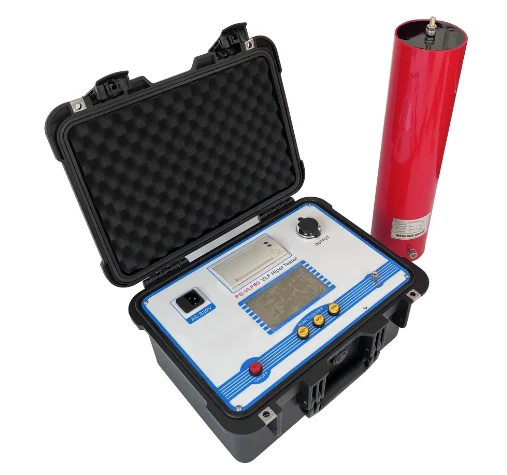TEL:
+86-0312-3189593
 English
English

Telephone:0312-3189593

Email:sales@oil-tester.com

-
 Afrikaans
Afrikaans -
 Albanian
Albanian -
 Amharic
Amharic -
 Arabic
Arabic -
 Armenian
Armenian -
 Azerbaijani
Azerbaijani -
 Basque
Basque -
 Belarusian
Belarusian -
 Bengali
Bengali -
 Bosnian
Bosnian -
 Bulgarian
Bulgarian -
 Catalan
Catalan -
 Cebuano
Cebuano -
 China
China -
 China (Taiwan)
China (Taiwan) -
 Corsican
Corsican -
 Croatian
Croatian -
 Czech
Czech -
 Danish
Danish -
 Dutch
Dutch -
 English
English -
 Esperanto
Esperanto -
 Estonian
Estonian -
 Finnish
Finnish -
 French
French -
 Frisian
Frisian -
 Galician
Galician -
 Georgian
Georgian -
 German
German -
 Greek
Greek -
 Gujarati
Gujarati -
 Haitian Creole
Haitian Creole -
 hausa
hausa -
 hawaiian
hawaiian -
 Hebrew
Hebrew -
 Hindi
Hindi -
 Miao
Miao -
 Hungarian
Hungarian -
 Icelandic
Icelandic -
 igbo
igbo -
 Indonesian
Indonesian -
 irish
irish -
 Italian
Italian -
 Japanese
Japanese -
 Javanese
Javanese -
 Kannada
Kannada -
 kazakh
kazakh -
 Khmer
Khmer -
 Rwandese
Rwandese -
 Korean
Korean -
 Kurdish
Kurdish -
 Kyrgyz
Kyrgyz -
 Lao
Lao -
 Latin
Latin -
 Latvian
Latvian -
 Lithuanian
Lithuanian -
 Luxembourgish
Luxembourgish -
 Macedonian
Macedonian -
 Malgashi
Malgashi -
 Malay
Malay -
 Malayalam
Malayalam -
 Maltese
Maltese -
 Maori
Maori -
 Marathi
Marathi -
 Mongolian
Mongolian -
 Myanmar
Myanmar -
 Nepali
Nepali -
 Norwegian
Norwegian -
 Norwegian
Norwegian -
 Occitan
Occitan -
 Pashto
Pashto -
 Persian
Persian -
 Polish
Polish -
 Portuguese
Portuguese -
 Punjabi
Punjabi -
 Romanian
Romanian -
 Russian
Russian -
 Samoan
Samoan -
 Scottish Gaelic
Scottish Gaelic -
 Serbian
Serbian -
 Sesotho
Sesotho -
 Shona
Shona -
 Sindhi
Sindhi -
 Sinhala
Sinhala -
 Slovak
Slovak -
 Slovenian
Slovenian -
 Somali
Somali -
 Spanish
Spanish -
 Sundanese
Sundanese -
 Swahili
Swahili -
 Swedish
Swedish -
 Tagalog
Tagalog -
 Tajik
Tajik -
 Tamil
Tamil -
 Tatar
Tatar -
 Telugu
Telugu -
 Thai
Thai -
 Turkish
Turkish -
 Turkmen
Turkmen -
 Ukrainian
Ukrainian -
 Urdu
Urdu -
 Uighur
Uighur -
 Uzbek
Uzbek -
 Vietnamese
Vietnamese -
 Welsh
Welsh -
 Bantu
Bantu -
 Yiddish
Yiddish -
 Yoruba
Yoruba -
 Zulu
Zulu
កុម្ភៈ . 14, 2025 12:03
Back to list
transformer differential stability test
The transformer differential stability test is a critical component of ensuring the reliability and efficiency of power systems. Transformers play an essential role in power distribution by stepping voltage levels up or down, and any instability can lead to significant disruptions. Conducting stability tests not only ensures the longevity of the transformers but also guarantees safe and consistent electricity supply to residential, commercial, and industrial users.
Trustworthiness in transformer stability testing is heightened by adherence to international standards such as IEC and IEEE. These guidelines set benchmarks for testing procedures, ensuring that the methodologies used deliver reliable results. By complying with these standards, testing services demonstrate their commitment to quality and safety, reinforcing their authority in the field. Real-world experience plays a vital role in refining testing practices. Industries often encounter unique operational challenges that require tailored testing solutions. Feedback from field operations can lead to improvements in testing procedures, ensuring they remain relevant and effective. Companies that integrate customer insights into their testing frameworks are better positioned to offer dependable services. For organizations looking to optimize their transformer management strategies, investing in differential stability testing is a strategic choice. It not only mitigates the risk of catastrophic failures but also enhances operational efficiency. Regular testing can identify potential weaknesses before they escalate into significant issues, allowing for planned maintenance that minimizes downtime and operational costs. In conclusion, transformer differential stability testing is indispensable for sustaining the integrity of power distribution systems. By embracing both traditional and innovative testing methodologies, leveraging industry standards, and continually refining practices through real-world experience, organizations can ensure reliability and safety. As energy demands grow and infrastructure ages, the importance of comprehensive and authoritative transformer testing cannot be overstated.


Trustworthiness in transformer stability testing is heightened by adherence to international standards such as IEC and IEEE. These guidelines set benchmarks for testing procedures, ensuring that the methodologies used deliver reliable results. By complying with these standards, testing services demonstrate their commitment to quality and safety, reinforcing their authority in the field. Real-world experience plays a vital role in refining testing practices. Industries often encounter unique operational challenges that require tailored testing solutions. Feedback from field operations can lead to improvements in testing procedures, ensuring they remain relevant and effective. Companies that integrate customer insights into their testing frameworks are better positioned to offer dependable services. For organizations looking to optimize their transformer management strategies, investing in differential stability testing is a strategic choice. It not only mitigates the risk of catastrophic failures but also enhances operational efficiency. Regular testing can identify potential weaknesses before they escalate into significant issues, allowing for planned maintenance that minimizes downtime and operational costs. In conclusion, transformer differential stability testing is indispensable for sustaining the integrity of power distribution systems. By embracing both traditional and innovative testing methodologies, leveraging industry standards, and continually refining practices through real-world experience, organizations can ensure reliability and safety. As energy demands grow and infrastructure ages, the importance of comprehensive and authoritative transformer testing cannot be overstated.
Previous:
Latest news
-
Testing Equipment Industry Sees Major Advancements in 2025: Smart & Precision Technologies Lead the WayNewsJun.06,2025
-
Applications of Direct Current Generators in Renewable Energy SystemsNewsJun.05,2025
-
Hipot Tester Calibration and Accuracy GuidelinesNewsJun.05,2025
-
Digital Circuit Breaker Analyzer Features and BenefitsNewsJun.05,2025
-
Benefits of Real-Time Power Quality Monitoring Devices for Industrial EfficiencyNewsJun.05,2025
-
Earth Fault Loop Testing in High-Rise Building Electrical SystemsNewsJun.05,2025



